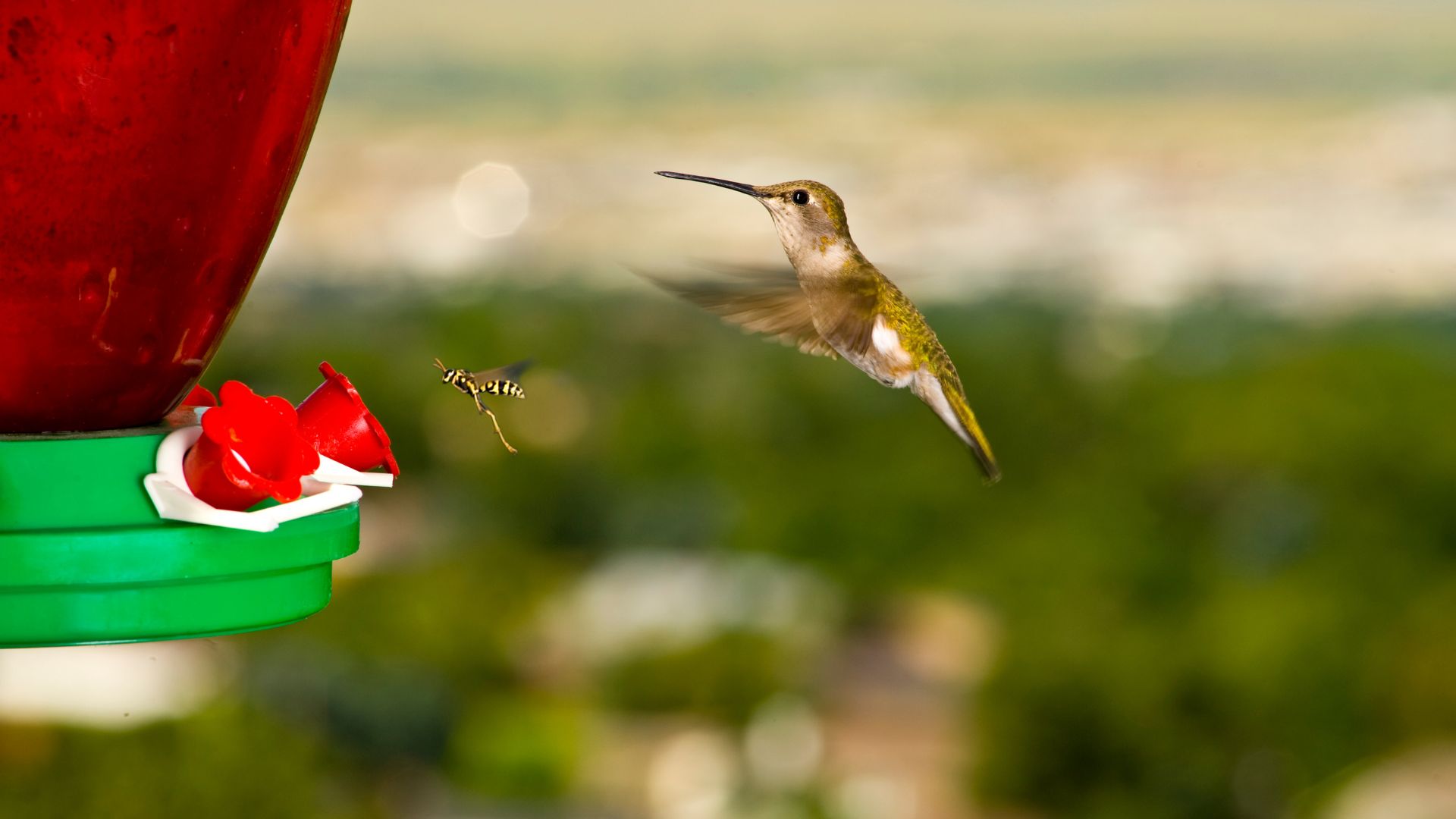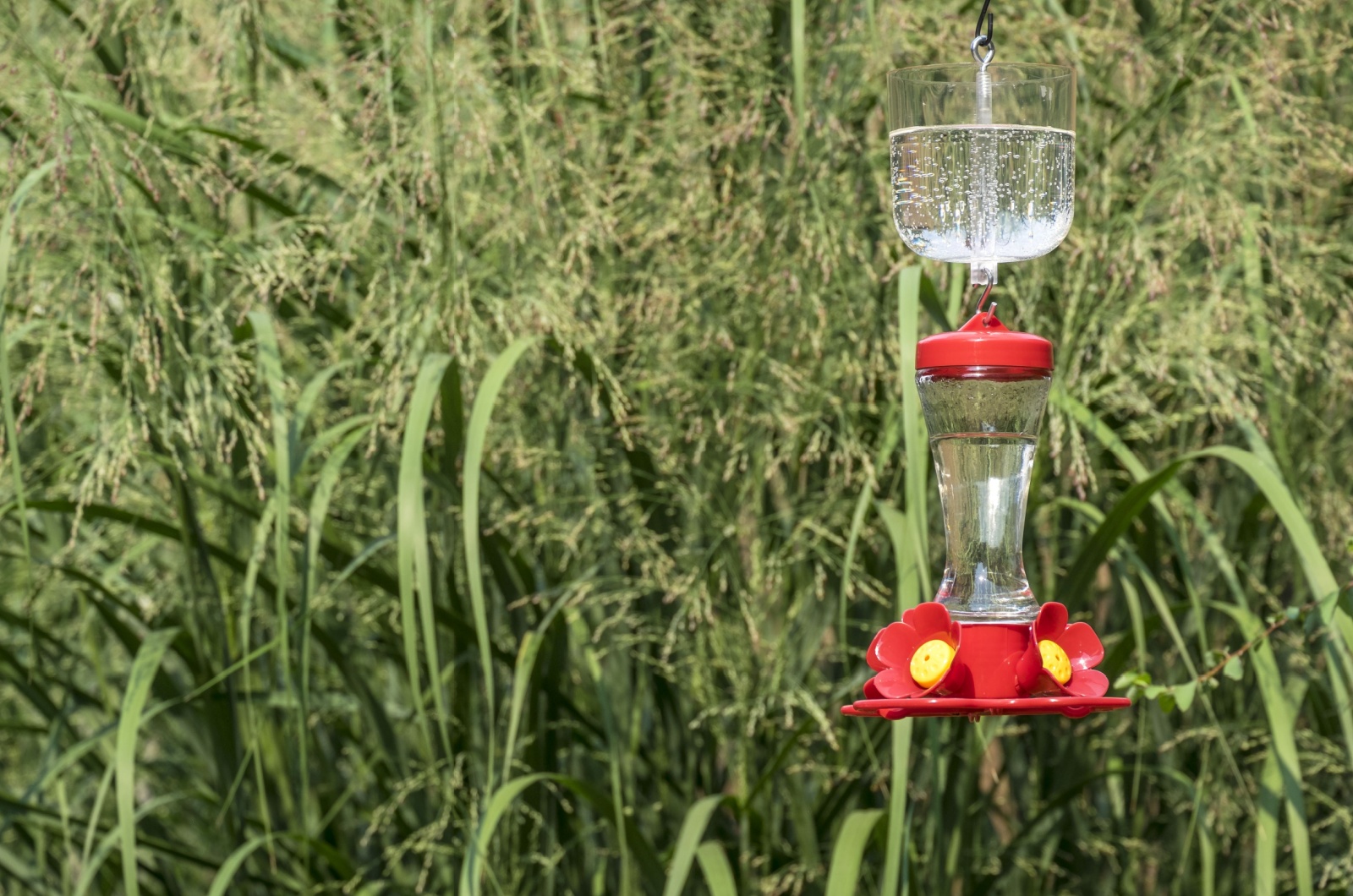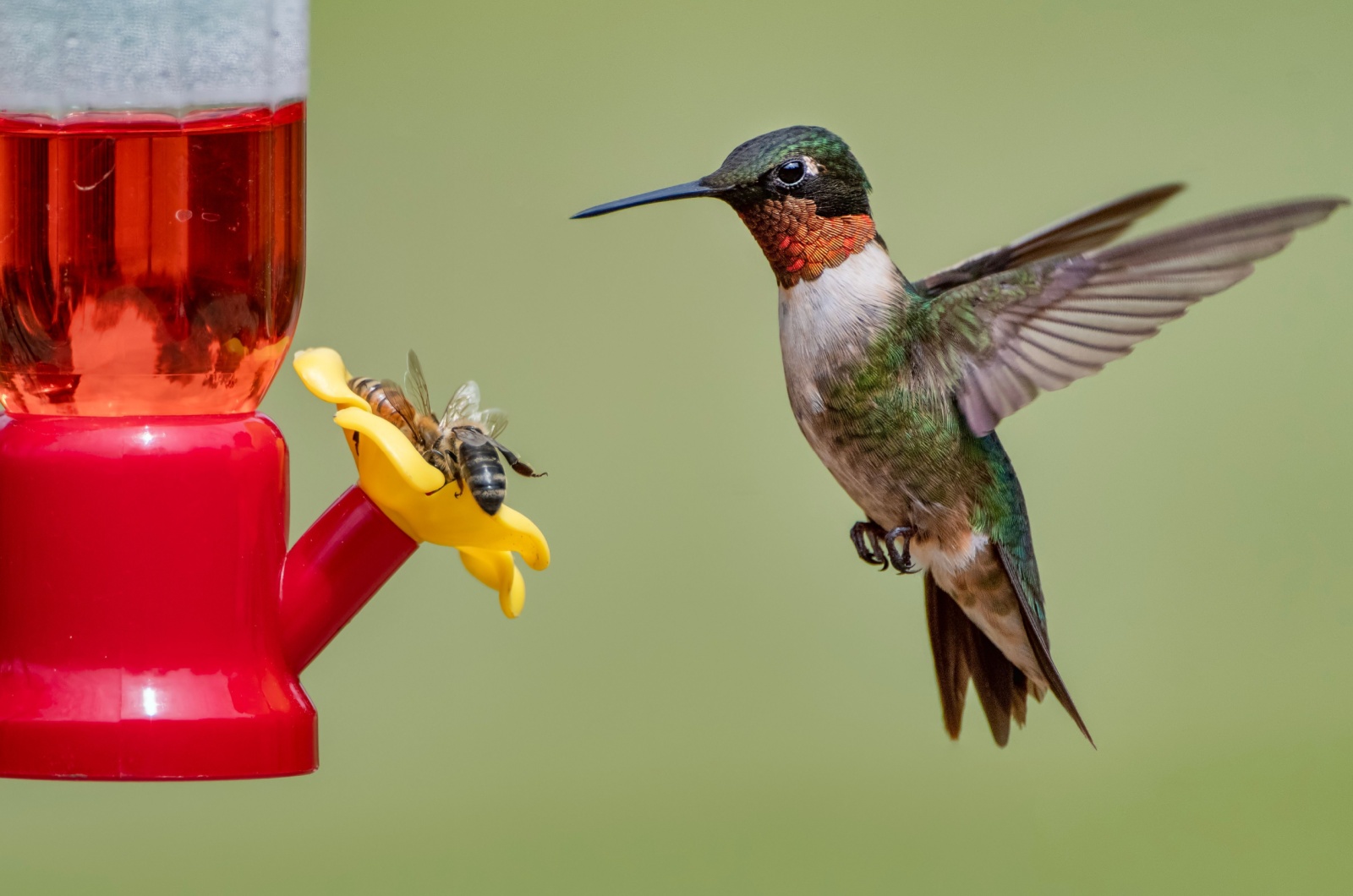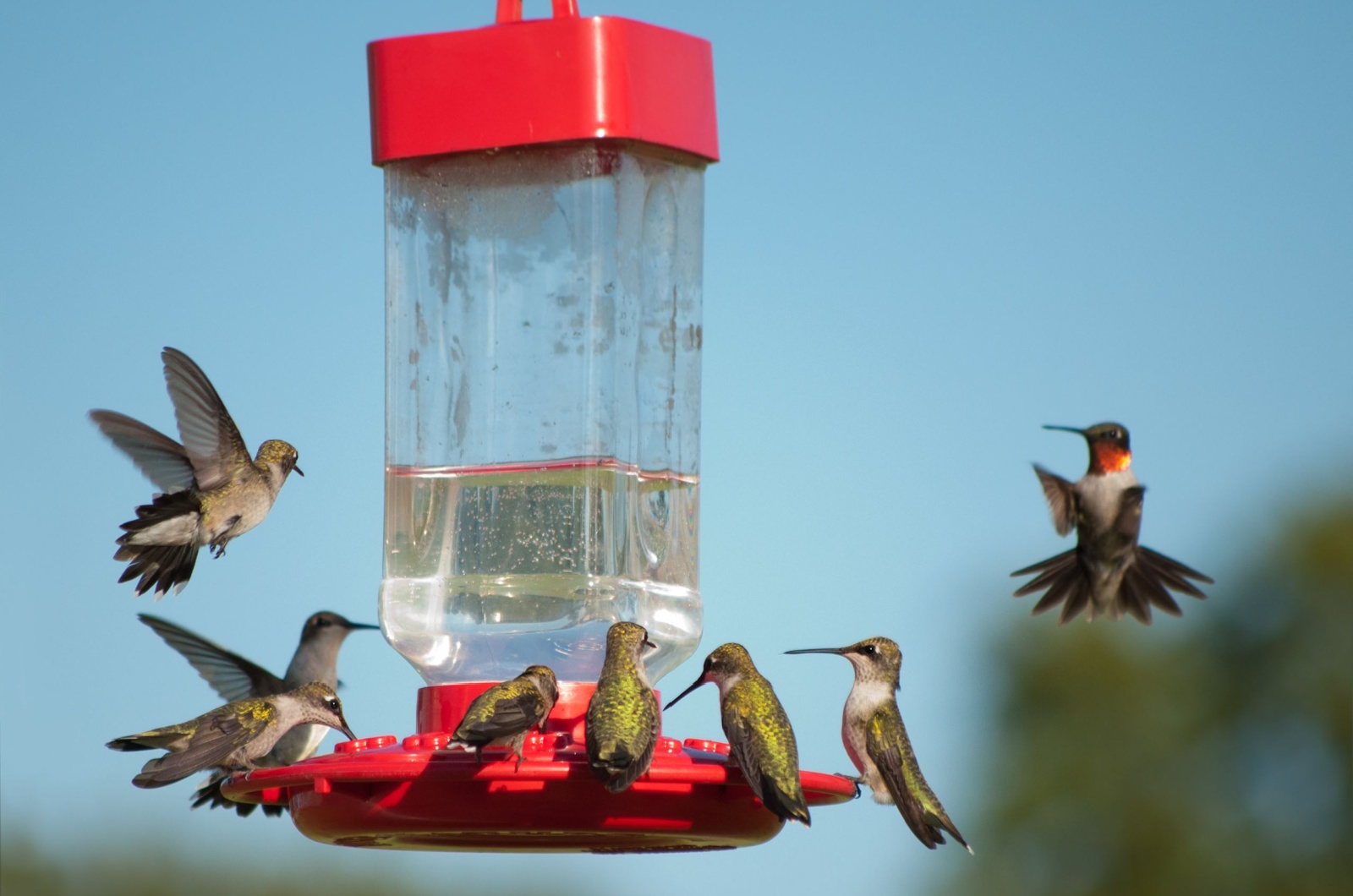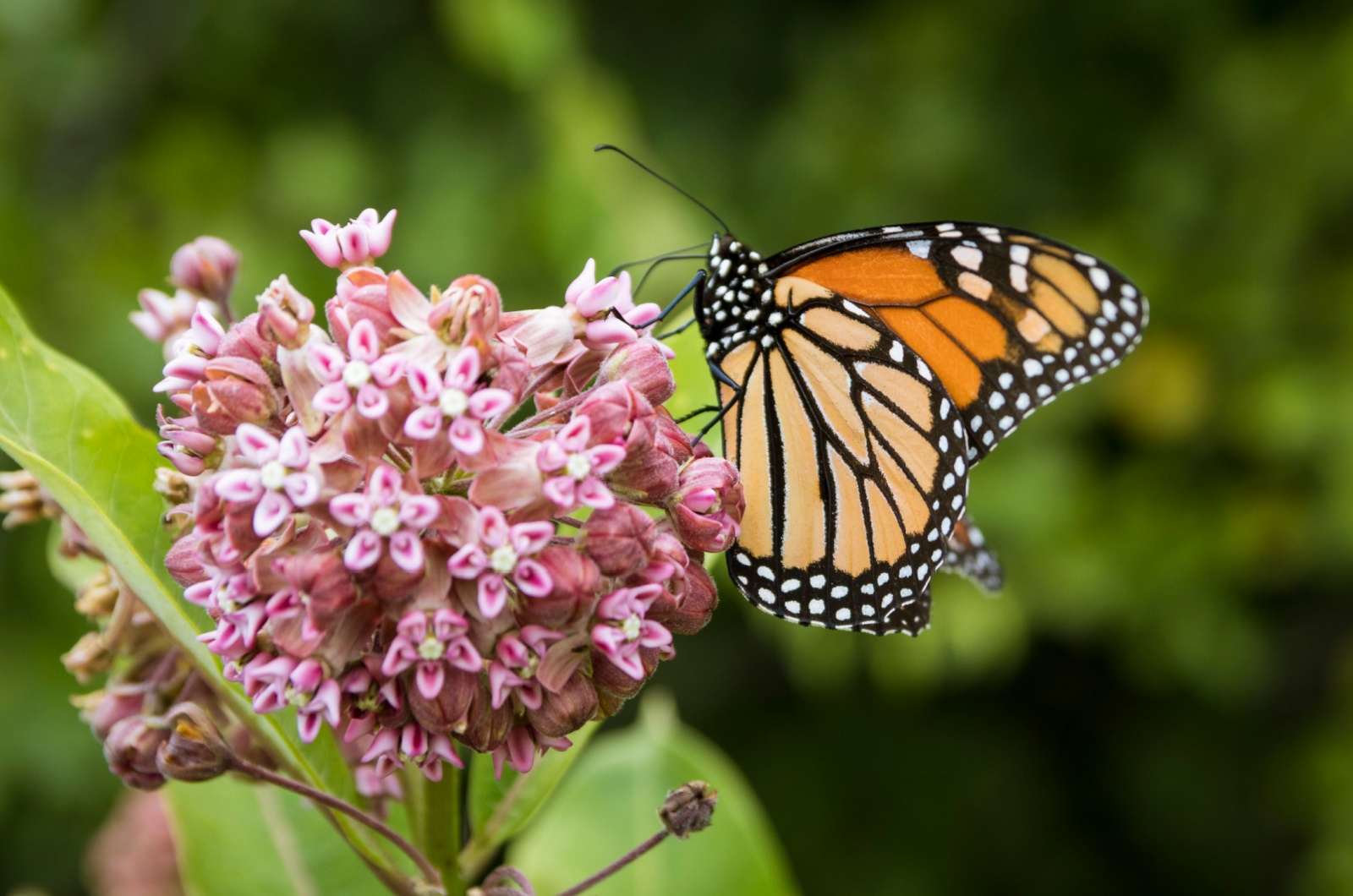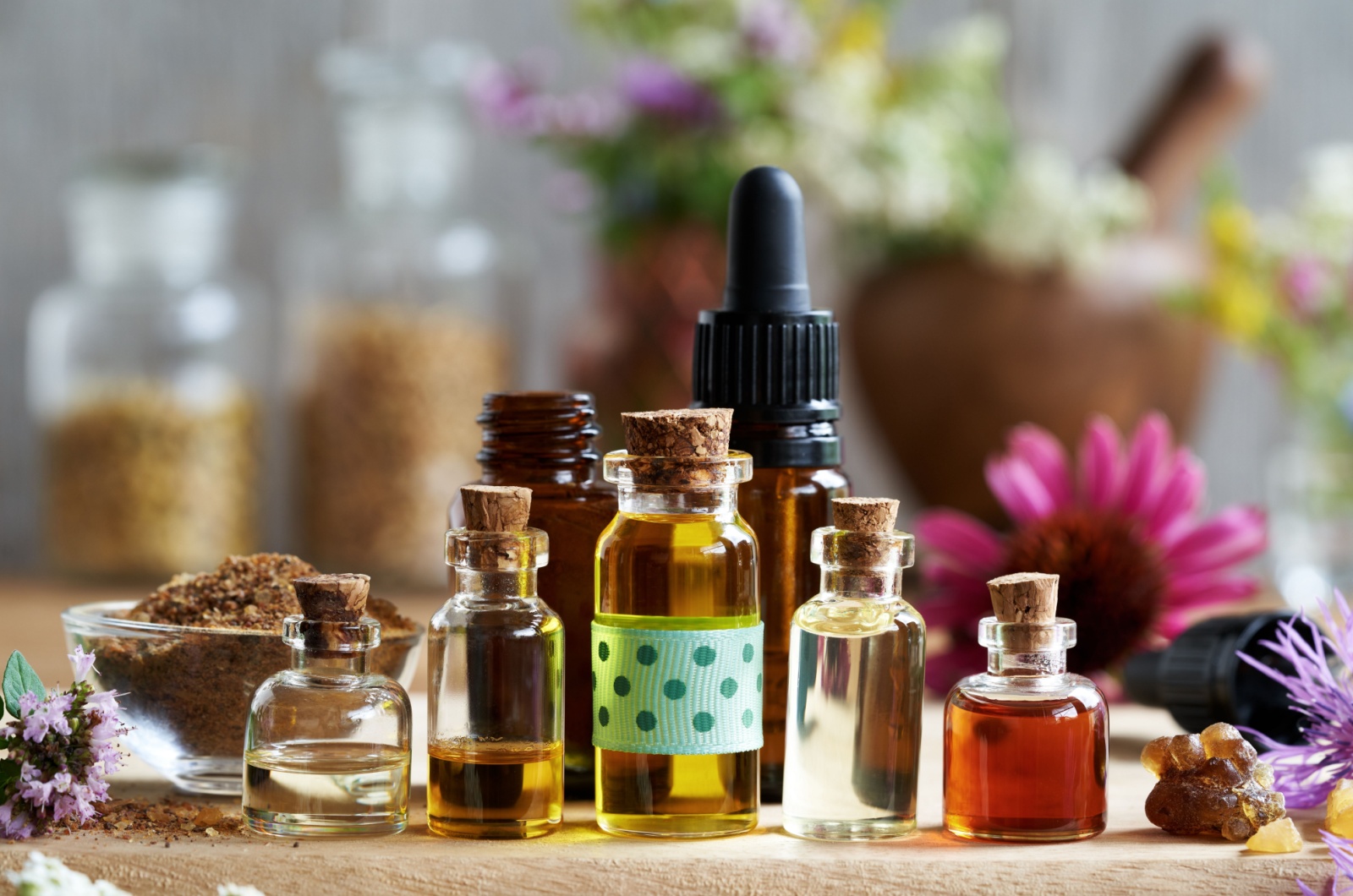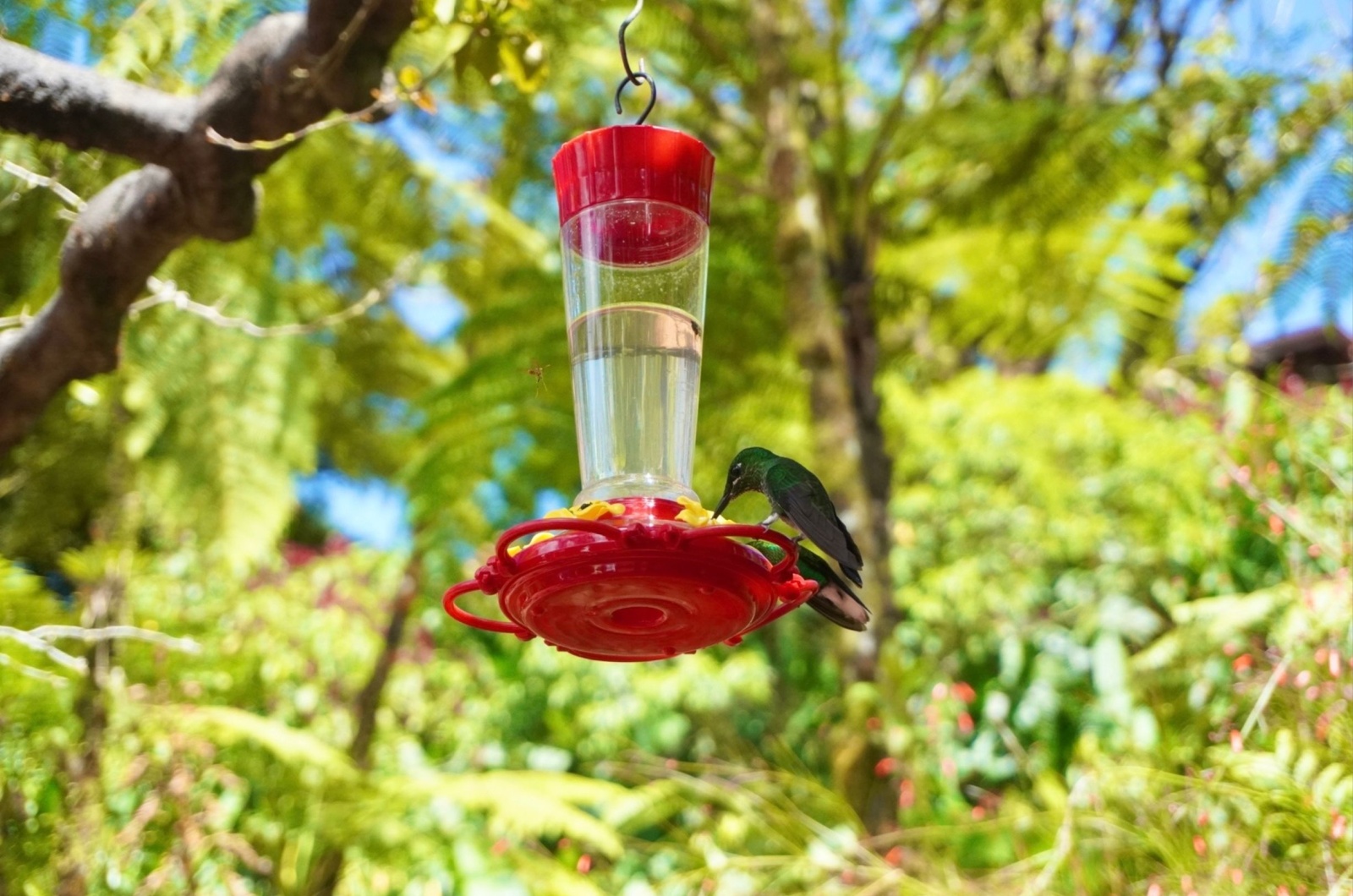Last summer, I put up a hummingbird feeder to attract those delightful birds to my garden. Little did I know that I would end up attracting more wasps than hummingbirds!
What’s up with those insects? I mean, they have plenty of nectar-filled flowers just waiting to be pollinated, but they choose to go for the feeder instead?! Ugh, those lazy annoyances!
And to make things worse, they steal all the goodies from my hummingbirds, so they won’t even come to my garden anymore. Instead of cheerful bird sounds, all I hear is buzzing.
Well, not for too long!
I decided to find a solution and keep those insects far, far away from my hummingbird feeders. Here’s what I learned so far, I hope this helps some fellow gardeners out there.
1. Don’t Bother With Ant Moats, They Won’t Change A Thing
The first advice I heard was to get ant moats, and that’s probably the worst advice I’ve ever received since I started gardening.
Sure, it all sounds good: all you have to do is simply fill this handy plastic device with water and attach it above your feeder. Then, the water creates a barrier that prevents ants from crawling down to the sweet nectar below.
However, wasps are flying insects that can bypass these obstacles without any issue. Perhaps this can effectively deter crawling pests like ants, but it’s highly unlikely to stop wasps in their tracks.
I would suggest upgrading your feeder with nectar guards instead. I will be talking about them in a minute, so stay tuned!
Related: 10 Best Flowers For Attracting Hummingbirds Into Your Garden
2. Keeping Your Feeder Nice And Clean Helps A LOT
Not to beat around the bush, but cleaning your hummingbird feeders is a must, whether or not you’re dealing with pesky wasps.
It’s best to give your feeders a good scrubbing at least once a week, especially in colder weather. But when the temperatures rise, bump up the cleaning routine to twice a week. Why?
Well, besides keeping the feeders spick and span, regular cleaning helps prevent mold buildup and keeps those beloved birds healthy and happy.
Wasps absolutely love sweet spills and sticky messes, so if you notice any sugar water pooling on the ground or dripping down a wall, grab a hose and give that area a good rinse.
I usually use hot water and disassemble the feeder to clean all the parts thoroughly. But whatever you choose to do, please steer clear of harsh bleach!
You can use a gentle vinegar solution instead (this will keep our feathery friends safe and healthy).
3. Don’t Put Up Anything Yellow (It’s Moths’ Fave Color!)
Wasps and I have something in common: we both like yellow colors. But unlike myself, wasps are completely repulsed by fiery red hues!
I bet they also don’t like that song “Paint the town red”. If that was the case, wasps would totally move out.
Now you know why most bird feeders have vibrant red colors. However, some might have nectar guards with yellow accents, which can inadvertently attract wasps.
But hey, you can outsmart those pesky insects by staying away from yellow and opting for nectar guards in red or clear colors. While you’re at it, check out the surroundings of your feeder.
If nearby flowers or decor are yellow or white, it might be time for a strategic relocation ‘cause those flowers might look alluring to these pests. But hey, you could also add some purple flowers that attract hummingbirds!
4. Nectar Guard Tips Will Serve Their Purpose
I already mentioned that wasps are attracted to that sweet nectar around the feeders. But sometimes, they can even sneak inside it and indulge in the sugary goodness.
Luckily, there’s a simple, yet effective solution: nectar guard tips, otherwise known as bee guards.
These are small plastic pieces that fit perfectly into the feeder ports, reducing the size of the feeding hole.
This clever design keeps wasps from crawling inside and stealing the nectar, while still allowing hummingbirds to enjoy their sweet treat with their slender beaks and tongues.
The best part? You can easily get nectar guards separately from your feeder, and they’re replaceable if they wear out from too much sun or weather exposure.
I swear by nectar guard tips, they are like my secret weapon against these tiring wasps.
5. Keep Those Hummingbird Feeders Moving
What I’ve learned the hard way is that wasps are crafty critters, always on the lookout for an easy snack, which is why they’ll always go for the feeder instead of pollinating flowers (yep, they are that lazy!).
The trick to help you keep them from buzzing around your garden is hanging your feeders a good distance away from flower beds.
However, wasps can be persistent little annoyances once they find a good food source.
If you notice a swarm of wasps taking over your hummingbird feeder, try moving it to a new spot or taking it down for a couple of days.
This throws off their scent trail, giving your buzzing buddies a chance to find their snacks somewhere else.
Just make sure to wash the feeder before putting it back out, and you’ll be back in business!
Related: If You Want Hummingbirds And Butterflies In Your Yard, You Must Plant This Flowering Ground Cover
6. Feed Your Wasps Elsewhere
Turn the tables on those pesky wasps by giving them their own all-you-can-eat buffet!
I usually whip up a sweet sugar water mixture and serve it in a brightly colored bowl (yellow or orange, of course!). Then, I set it up in a sunny spot away from my hummingbird feeder, and watch as they flock to their new favorite hangout.
Meanwhile, those pretty hummingbirds can enjoy their meals in peace! When the bowl needs a refill, I just give it a quick wash and top it up. Who knew keeping the peace could be this sweet?
In case you don’t want to give those greedy wasps anything to feed on, you could put up multiple feeders.
While wasps may still be attracted to the sweetness of nectar, having extra feeders ensures your fluttering friends always have a spot to dine without interruption.
Just remember, with great feeders comes great responsibility – clean them to keep both birds and wasps happy!
7. Native Pollinator Flowers To The Rescue
Did you know that wasps are more than just pests? In fact, they are one of the best pollinators out there!
Therefore, you could plant plenty of native flowers (like milkweed or goldenrod) to satisfy their sweet tooth.
These plants not only attract wasps but also help support other important pollinators like bees and butterflies. Plus, by strategically placing these flowers near your vegetable garden, you can boost your crop yield naturally.
It’s a win-win for your garden and the environment!
This might be useful: 25 Flowers That Attract Hummingbirds And Butterflies
8. Hanging Decoys Are Only Fooling You
There’s a popular notion floating around that hanging a fake wasp nest can shoo those territorial wasps away.
I placed these decoy nests, hoping it would help me get rid of those buzzers. Turns out, the ground-nesting critters couldn’t care less about hanging decoy nests. And even paper-nesting wasps might not be fooled, as they often build their nests close together in nature.
Sure, the idea sounds good, but it’s definitely not worth your money in the end. I could’ve spent my money on something far more useful!
9. Oil Or Petroleum Jelly Won’t Help Neither
Another useless tip I’ve read online is using oil-based products like petroleum jelly or essential oils.
Sure, they might be used to harm those insects, but they also pose a risk to all creatures that come near them (your hummingbirds won’t be safe either!).
To keep your backyard ecosystem in balance, it’s best to steer clear of using such products around your bird feeders. Instead, focus on bird-friendly solutions that won’t cause any harm.
Don’t use petroleum jelly either, as it can stick to hummingbirds’ feathers and weigh them down. Don’t risk everything to get rid of wasps, or you’ll end up with a whole lot of nothing!
Related: Revamp Your Garden With These Heat-Proof Geraniums, Guaranteed to Attract Hummingbirds
10. You Could Give Those Wasps A Good Drink
Wasps, much like bees and butterflies or any other living being, rely on water. They not only drink water but also use it to construct their nests by mixing it with wood pulp.
What I didn’t know is that water helps them cool their nests on hot days, and they share it with their nest-mates and larvae (how very sweet of them).
I figured that understanding these water needs could provide insight into their behavior and help us implement effective strategies to manage their presence around hummingbird feeders.
That’s when I came up with a great idea: they need water, we give them water, but far far away from the feeders (smart, right?).
You can use bee cups or DIY mason jars as perfect water stations for wasps and other pollinators. Adding a bird bath with stones or marbles in the basin can also provide perching spots for insects.
By offering alternative water sources, you’ll not only keep wasps at bay from your feeder but also provide essential hydration for other beneficial pollinators in your yard.
11. Inverted Hummingbird Feeders Might Be Your Last Option
If nothing else works, go for the safest option: inverted hummingbird feeders. You see, changing the style of your hummingbird feeder might just be the trick to minimizing those wasp visits.
There are primarily two types of hummingbird feeders: saucer feeders and inverted or vacuum feeders.
Saucer feeders have a reservoir at the base covered by a plate with holes, allowing birds to access nectar. To fill them, you simply remove the plate, pour in the nectar, and replace it.
In contrast, inverted or vacuum feeders feature an inverted bottle with a vacuum seal, placing nectar through ports along the bottom.
In inverted or vacuum feeders, nectar is typically positioned closer to the top of the ports compared to saucer feeders. This setup makes it more challenging for wasps to access the nectar in saucer feeders.
Some bird experts even suggest not filling their saucer feeders to the brim so the nectar remains further from the surface.
It is a strategic move that keeps nectar within reach of hummingbirds’ long beaks while deterring wasps from reaching it.
I bet you are feeling ready to outsmart those pesky wasps!
Carefully go through each method and find the one that suits you best. There are 11 hacks, so if one doesn’t seem to work, simply go and try the next. And soon, your hummingbirds will have their feeders all to themselves!
Also read: This Is Why Leaving Grape Jelly Outside Could End Tragically For Hummingbirds

